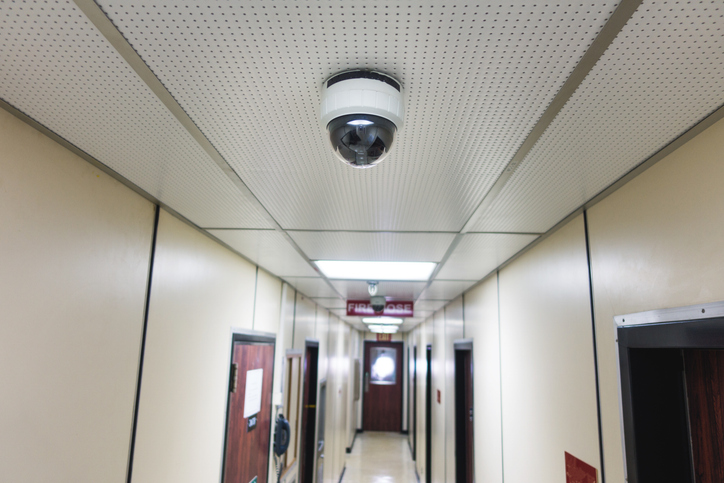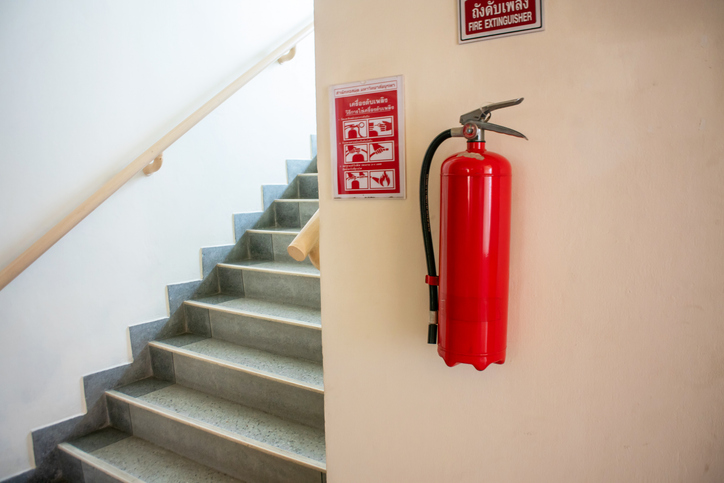The amount of security and safety information to document regarding your school building can be overwhelming. As you create and train on emergency response plans, what is the most important information to include? How can you keep your staff trained and knowledgeable in the event of an incident?
This is a starting point for the most valuable points of interest to include in your school emergency plans. This also includes the plans you create with OSCR360.
Four critical points of interest to include in your school emergency plans
1. Safety Features
Include the locations and operating instructions for 911 call buttons, locked key boxes, AEDs, fire alarm panels, and fire extinguishers. Label all security cameras with unique identifiers to distinguish between different cameras. If your school uses outdoor blue lights to indicate whether the building is safe to approach and enter, be sure to include those in your plans too.
2. Utilities
All utilities should be clearly labeled points of interest. To fully benefit from utility POIs, be sure to include written or visual instructions that first responders and incident commanders can follow in an emergency. The locations and instructions for water, electrical, and gas main shut-off points are very important!
3. Emergency Exits
Aside from doors and windows, identify fire escapes and roof access points. Note whether roof access involves any additional security features, such as a keycard system or security camera to limit access.
4. Navigation Labels
Your OSCR360 project should clearly show navigation labels, such as room numbers, entry doors, and exit doors. Many schools use capital letters to label doors (Door A, Door B, and so on). Remember to note whether a door has any unique features, such as exit-only or fob entry.
OSCR360 organizes key points of interest in your school emergency plans
The OSCR360 system is used to create comprehensive virtual walkthroughs of school campuses. Capture, store, and organize 360-degree images taken across the campus, and then use the OSCR360 Software identify significant locations within those images. Create training and emergency plans, including after-school event activity management, reunification plans, fire drills, and more. Share each OSCR project with your school community, first responders, and other stakeholders who will benefit from additional planning and training.
What is an OSCR360 Point of Interest (POI)?
An OSCR360 POI appears as a small icon within the software and can be clicked on to reveal additional details. For instance, a POI might contain a close-up photograph of a safety feature found at the specified location, a PDF document with detailed fire-drill information, or even a video link with operating instructions.
OSCR360 Points of Interest can be categorized by icon style and color and given unique display titles which can be set to only show when hovered over. Together, these features make it easy to organize the details of your project without cluttering its appearance.



OSCR360 for school safety & emergency planning
OSCR360 is a multi-purpose tool designed from the feedback of people who use it. For school districts, OSCR360 was purpose built for school safety teams to create emergency plans, train for emergency response, and collaborate with first responders.
Emergency planning
OSCR360 allows safety committees to virtually tour the school campus, which serves as a reference point during the planning process. Without leaving the room, the committee can view any location on campus. OSCR360 embedded POI’s also store and organize important details, documents, and instructions. OSCR360 is versatile enough to be used for emergency plans (lockdowns, fire drills, evacuations, etc.), after school safety and event planning, as well as reunification planning.
Sharing
Using the free OSCR360 viewer, share emergency plans with school administrators, the facilities team, the buildings and grounds crew, county emergency management and first responders. These groups can remotely access campus/building maps, virtual walkthroughs, emergency procedures, and critical building information so that all stakeholders are on the same page.
Training
With OSCR360, training (and re-training) can occur for teachers and staff from the comfort of a meeting room or classroom. Virtually tour the reunification site and introduce staff to reunification procedures during a faculty meeting. Show a substitute teacher fire drill and evacuation plans before the school day begins. Review emergency processes with staff on a regular basis to keep the information fresh in their minds.
Use OSCR360 at police or fire headquarters to train and review procedures. First responders can even access OSCR360 projects from emergency vehicle MDTs to familiarize themselves with the school layout during downtime. As compared to lengthy written plans and building blueprints, an OSCR360 project provides a visual component that is easy to understand and learn from.